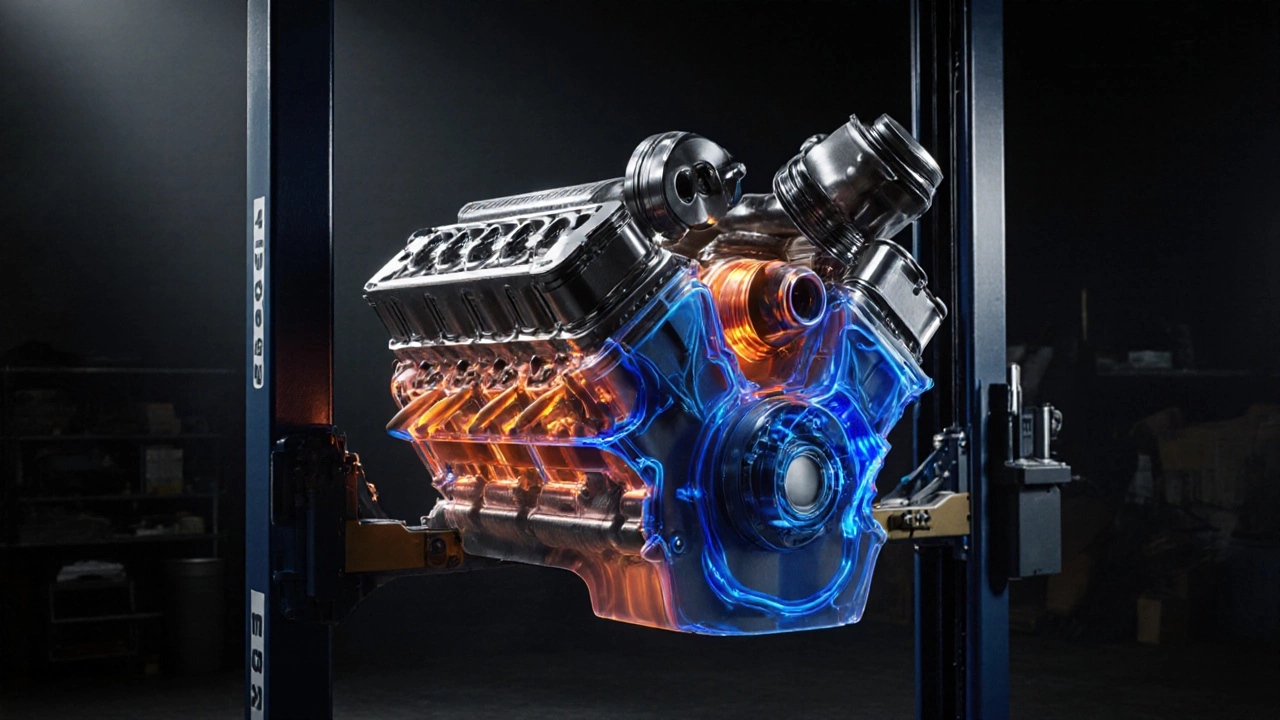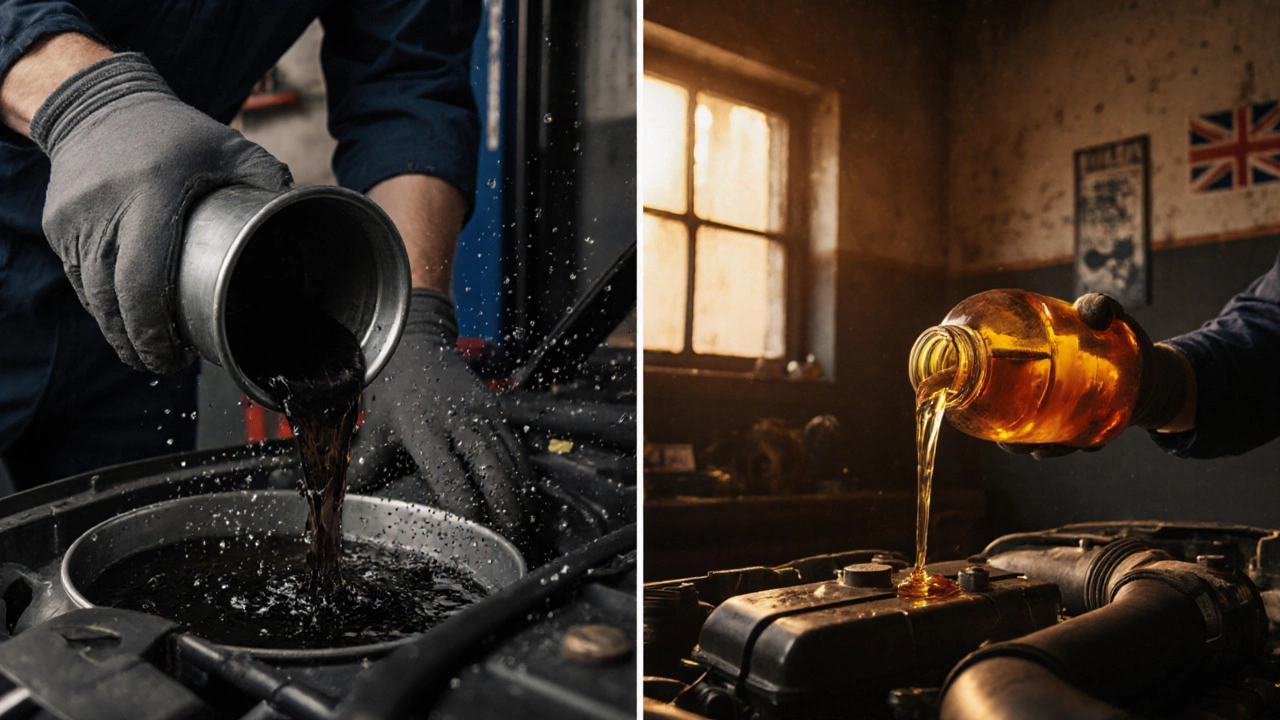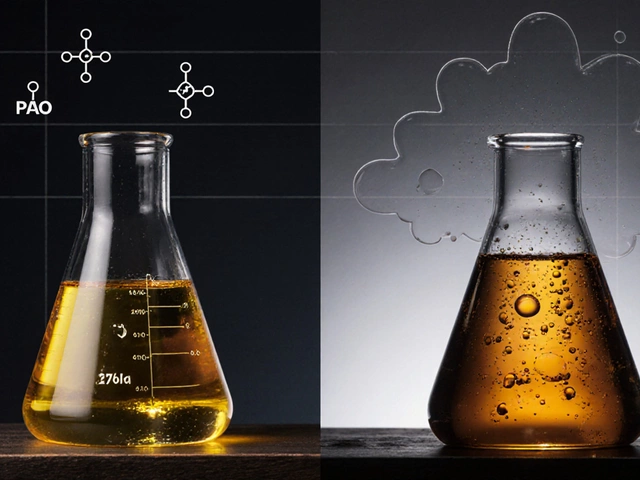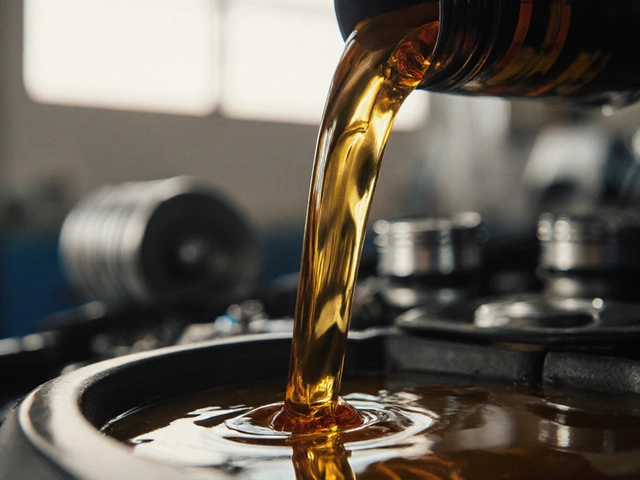When you hear "synthetic oil" people often assume it’s a completely different creature from the oil that keeps your engine humming. The truth is a bit messier - synthetic oil is a kind of engine oil, but not every engine oil is synthetic. Below we untangle the jargon, spell out the specs that really matter, and give you a clear checklist for choosing the right fluid for your car.
Key Takeaways
- Synthetic oil is a subset of engine oil, formulated from engineered base stocks.
- Mineral (conventional) oil still meets most everyday driving needs if you follow the manufacturer’s specs.
- Viscosity grade, API rating and SAE rating are the three numbers you should check on any bottle.
- Modern engines often recommend synthetic for better wear protection and longer oil‑change intervals.
- Switching between oil types is safe as long as you stay within the approved ratings.
Defining the Players
Synthetic Oil is a type of engine oil that uses chemically engineered base stocks and premium additives to achieve consistent performance across temperature extremes.
Engine Oil is the broader category of lubricants designed to reduce friction, carry heat away, and protect internal engine parts.
Both terms appear on the same bottle, but the "synthetic" label tells you how the oil was made, not that it’s a different job entirely.
How Synthetic Differs From Conventional (Mineral) Oil
Conventional oil, often called mineral oil, starts life as crude petroleum that’s refined and blended with additives. Its molecular structure varies batch‑to‑batch, which can affect performance at very high or low temperatures.
Mineral Oil is the traditional, less expensive alternative that still meets the minimum specifications set by manufacturers.
Here’s a quick visual breakdown:
| Feature | Synthetic Oil | Mineral (Conventional) Oil |
|---|---|---|
| Base Stock | Engineered molecules (PAO, EST) | Refined crude petroleum |
| Viscosity Stability | Excellent across -40°C to 150°C | Degrades at extremes |
| Wear Protection | High‑grade additives, lower wear rates | Standard additive package |
| Oil‑Change Interval | 7,500‑15,000 km or 6‑12 months (per spec) | 3,000‑5,000 km or 3‑6 months |
| Cost per litre | ~£8‑£12 | ~£4‑£7 |
Decoding the Labels: Viscosity Grade, API Rating, SAE Rating
When you glance at a bottle you’ll see a string of letters and numbers. They’re not random - they tell you exactly what the oil can handle.
Viscosity Grade (e.g., 5W‑30) indicates how the oil flows at cold‑start temperatures (the ‘W’ stands for winter) and at operating temperature. A lower first number means easier starts in cold weather.
API Rating (e.g., API SN, API SP) shows that the oil meets the American Petroleum Institute’s performance standards for gasoline engines. For diesel engines look for the “C” series, like API CJ‑4.
SAE Rating is the Society of Automotive Engineers’ way of naming viscosity, often seen as part of the same label (the numbers after the ‘W’).
When matching oil to your car, always use the combination of viscosity, API and SAE numbers that the manufacturer lists in the owner’s manual.
Why Modern Engines Prefer Synthetic
Turbochargers, direct injection and higher compression ratios push engines to hotter, faster operation. Synthetic oil’s engineered base stocks stay thin enough to circulate at high temps, yet thick enough to keep a film on moving parts.
Key benefits include:
- Better wear protection: laboratory tests show up to 30% less metal loss.
- Improved fuel economy: lower friction can save ~1‑2% fuel.
- Longer drain intervals: additives stay effective longer, cutting down on service visits.
That said, not every driver needs these perks. If you clock under 15,000 km a year, have a naturally aspirated engine, and live in moderate climates, conventional oil often passes the spec checks.
Switching Between Oil Types - Is It Safe?
Changing from mineral to synthetic (or vice‑versa) rarely causes problems, provided you stay within the approved viscosity and API ratings. The biggest “gotcha” is mixing old oil with new - always fully drain the sump before refilling.
Some older engines, especially those with “cork‑type” oil seals, can experience minor leaks when first switched to synthetic because the new oil cleans away built‑up deposits that were actually sealing gaps. The leaks usually stop after a few hundred kilometres as the seals re‑condition.
Bottom line: check the manufacturer’s recommendation, match the specifications, and do a clean drain‑and‑fill. You’ll be fine.

Choosing the Right Oil for Your Car - A Quick Checklist
- Locate the oil spec in your owner’s manual (e.g., 5W‑30, API SP, SAE 30).
- Decide if you want synthetic based on driving style, climate and warranty requirements.
- Check the Additives list for anti‑wear, detergent and anti‑foam agents.
- Confirm the oil meets or exceeds the required API and SAE ratings.
- Buy from a reputable retailer to avoid counterfeit products.
- Replace the oil filter at every oil change - a clean filter works hand‑in‑hand with fresh oil.
- Reset the service interval timer if your car’s ECU tracks oil‑change mileage.
Common Misconceptions About Synthetic Oil
Myth 1: Synthetic oil makes a worn engine run like new. Reality: It reduces further wear but can’t reverse existing damage.
Myth 2: Synthetic oil will void my warranty. Reality: As long as you use the spec‑approved oil, manufacturers accept synthetic.
Myth 3: You never need to change synthetic oil. Reality: Additives degrade over time; follow the recommended interval.
Real‑World Example: Switching a 2018 Ford Focus
John lives in Manchester and drives a 2018 Ford Focus with a 1.0 L EcoBoost. The manual calls for 5W‑30, API SN. He’s been using mineral oil for five years.
He decides to go synthetic to extend his change interval from 8,000 km to 12,000 km. He picks a fully synthetic 5W‑30 that meets API SN and SAE 30. After a proper drain‑and‑fill, the next oil change at 12,000 km shows clean oil, no metal particles, and the fuel economy improves by about 1.5% - exactly what the specs promised.
This simple swap illustrates that the decision hinges on matching the spec, not on brand hype.
When to Stick With Conventional Oil
If your car is older than ten years, has high mileage, and the manufacturer explicitly lists a mineral oil recommendation, stay with the original spec. Switching may not bring noticeable benefits and could introduce seal‑leak issues.
Also, if you run a tight budget and your driving is mostly short‑city trips, the cost savings of mineral oil can add up.
Final Thoughts
The short answer: synthetic oil is a type of engine oil, but not every engine oil is synthetic. Both fulfill the same core function - lubricating the engine - yet they differ in how they’re made, how long they last and how they perform under extreme conditions. By reading the viscosity grade, API rating and SAE rating on the bottle, you can pick the fluid that matches your car’s needs and your driving habits.

Can I mix synthetic and mineral oil?
It’s best to avoid mixing. If you accidentally combine the two, perform a full drain‑and‑fill before the next change to keep the oil’s performance consistent.
Does synthetic oil improve fuel economy?
Yes, because synthetic oil reduces internal friction. Real‑world tests show a modest 1‑2% boost, which adds up over thousands of kilometres.
How often should I change synthetic oil?
Follow the manufacturer’s interval, usually 7,500‑15,000 km or 6‑12 months for modern cars that use fully synthetic oil.
Will synthetic oil void my car’s warranty?
No, as long as the synthetic meets the OEM’s viscosity and API specifications. Warranty issues only arise if you ignore the recommended spec.
Is there any downside to using synthetic oil?
The main downsides are higher cost and the possibility of minor oil‑seal leaks in very old engines during the first few hundred kilometres. Otherwise, it’s a net benefit for most modern cars.


